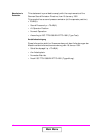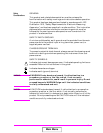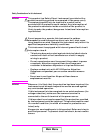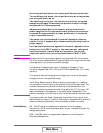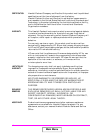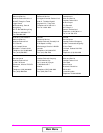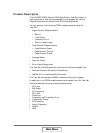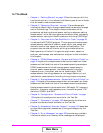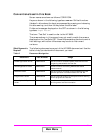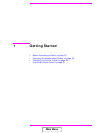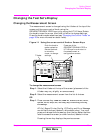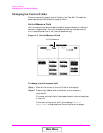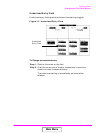
20
In This Book
• Chapter 1, “Getting Started,” on page 23 familiarizes you with the
front panel controls. It introduces the different types of control fields
that are used to make measurements
• Chapter 2, “Operating Overview,” on page 33 provides general
information about how to change measurement screens and change
control field settings. This chapter also provides some utility
procedures: calibrating channel power, setting a reference, setting
measurement limits, setting a generator/analyzer offset, averaging
measurements, saving and recalling setups, and using USER keys.
• Chapter 3, “Overview of the Test Set’s Built-In Tools,” on page 55
introduces the RFTOOLS program. This program automates some
measurements: cable fault location, swept return loss, swept and
discrete insertion loss, spectrum analyzer self-calibration. The
program also includes utilities for printing and data collection.
Basic operation of the built-in signal strength meter, spectrum
analyzer, oscilloscope, and code domain analyzer is also included in
this chapter.
• Chapter 4, “CDMA Measurements - Screens and Control Fields,” on
page 81 explains the measurements that can be made from these
screens and the fields that control the measurement’s parameters.
CDMA measurements include average power measurements,
channel power measurements, rho measurements (including
frequency error, time offset, and carrier feedthrough), EVM
measurements (including phase error and magnitude error), and
code domain measurements (including timing, phase, and power).
• Chapter 5, “Analog Measurements - Screens and Control Fields,” on
page 115 explains the measurements that can be made from these
screens and the fields that control the measurement’s parameters.
Analog measurements include ac/dc level, AM depth, AF frequency,
distortion, frequency and frequency error, transmitter power, FM
deviation, SINAD, and SNR.
• Chapter 6, “Configuration - Screens and Control Fields,” on page
159 explains the configuration controls for the Test Set.
• Chapter 7, “Connectors,” on page 183 describes the function and
physical attributes of each connector on the Test Set.
• Chapter 8, “Accessories, Manuals, Support,” on page 195 describes
any available upgrades, accessories, training and support for the
Test Set.
• Chapter 9, “Error Messages,” on page 203 provides any available
information about error recovery when messages are displayed.
Main Menu



